
Back to Loco of the Month homepage
Back to Sidestreet Bannerworks
.
February 2008
Merlin's 2-6-2 Hunslet
by Marc Horovitz

In 1898 The Sierra Leone Government Railways, operating in the (then) British colony in West Africa, took delivery of its first 2-6-2 tank engine, built by Hunslet. The railway was built to 2’6" gauge, which was unusual for a national railway. The locomotive proved so successful that a total of 32 of them were ultimately built for the railway, the last two in 1954. A similar locomotive, Russell, was built for the Welsh Highland Railway.
The Sierra Leone Government Railways were finally closed in 1974, at which time there were still five steam locomotives in operation, along with four diesels. One of the Sierra Leone locomotives, Nº 85, is preserved in Britain on the Welshpool & Llanfair Railway. It is this engine that Merlin has reproduced in miniature.
The model
Merlin’s model is a fair representation of this attractive prototype. It has some unusual and innovative features.
This engine was designed by Colin Cooper, son of Tom. The body of the locomotive, including smokebox, side tanks, and cab, lifts off the working chassis as a single unit, being held in place only by gravity. This engine is radio controlled, as were all of Merlin’s engines of this type. The electronics and batteries are carried in the right side tank. The large butane tank is housed in the left.
As with most R/C locomotives, this one uses two channels – one for the throttle and one for reversing. The reversing servo is near the front on the left side tank. A linkage connects it to a lever that moves the radius rod. The servo controlling the throttle is opposite it on the right side. This is connected to the throttle via a very long arm that extends over the electronics compartment.
This example is fitted with a pressure gauge and safety valve. Others had water glasses (there were several changes and modifications done at the factory over the production life of this engine). The throttle is unusual for a couple of reasons. One is that it is integral with the lubricator. Another is that it does not employ a needle valve to control the steam. Instead, it has a rotating plate with holes in it that, when the throttle is open, aligns with holes in the throttle body. When closed, the plate rotates so that the holes are not in alignment, blocking the steam passages.
The chassis is fairly straightforward. The engine shown here is an earlier example that was made with remaining Beck piston-valve cylinders, which the company had acquired in 1981 when Beck went out of business. Valve gear is dummy Walschaerts. Drive wheels are regaugeable, but the lead and trailing bogies have to be replaced if the gauge is to be changed.
The detail level is relatively low. Prototype photos show a variety of details (on various engines) that might be incorporated into this model. These include a double, “tropical” roof and strap-iron pilots on both ends.
The run
When I got this engine, it came fully fitted with R/C gear, but had no transmitter. Instead of trying to find a British-style transmitter, I decided to just swap out the receiver and start over, which I did with not much trouble.
Then it was time for an air test. I put the engine up on blocks, turned on the electronics and plugged the air hose into the safety-valve hole. The throttle seemed to work OK, but there was something definitely wrong with the reverser. In carefully examining the setup, I discovered that the servo was not providing enough (or equal) throw in both directions. Adjusting the trim on the radio did not help. In fact, the arm between the servo and the reversing link was too short. I had to make another. Once that was done, all seemed well.
The run was on a cool, clear October morning. I took the engine out to the track and prepared it in the usual way. I lit the fire, which caught immediately. After six or seven minutes, the safety valve lifted and we were ready to go. I turned on the receiver and transmitter, put the engine into gear, and opened the throttle. After some initial coughing and spluttering, the engine was away, running smoothly.
Throttle control, because of the type of throttle, was touchy. It wanted to be either on or off. But with a little practice, I was able to get reasonably good control out of the system, starting and stopping smoothly and gradually.
This is a satisfying locomotive to run. It is docile, yet powerful and it looks great perambulating through the garden on a cool morning, showing a great plume of steam at the stack.
|
|
|
| Builder | Merlin Locomotive Works (UK) |
| Date built | Circa 1983 |
| Gauge | 1 (45mm) |
| Scale | 16mm |
| Boiler | Single flue |
| Fittings | Safety valve, pressure gauge |
| Fuel | Butane |
| Blow-off pressure | 40 psi |
| Cylinders | Two, double-acting piston-valve |
| Reversing gear | Dummy Walschaerts |
| Lubricator | Displacement |
| Weight | 10 lbs., 8 oz. |
| Dimensions | Length over end beams, 12"; width, 4-3/8"; height, 6-5/8" |
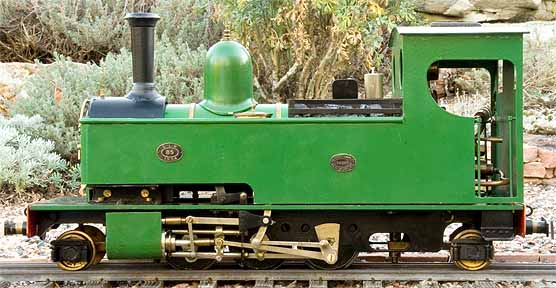
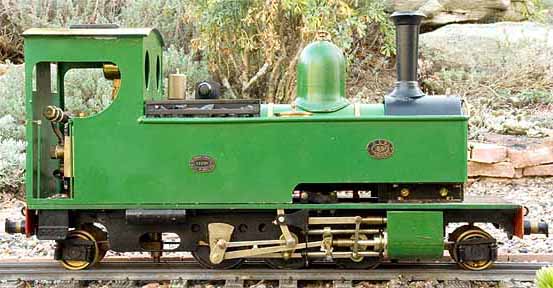
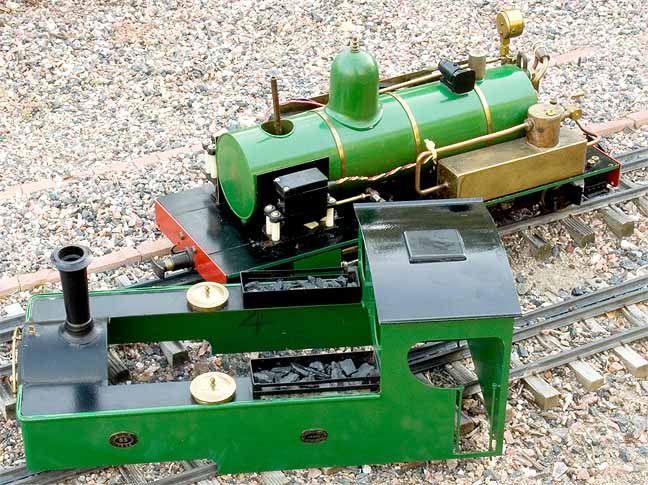

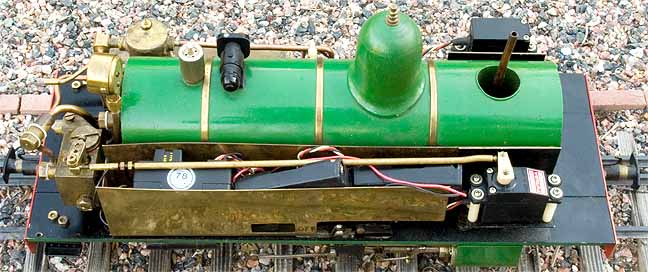


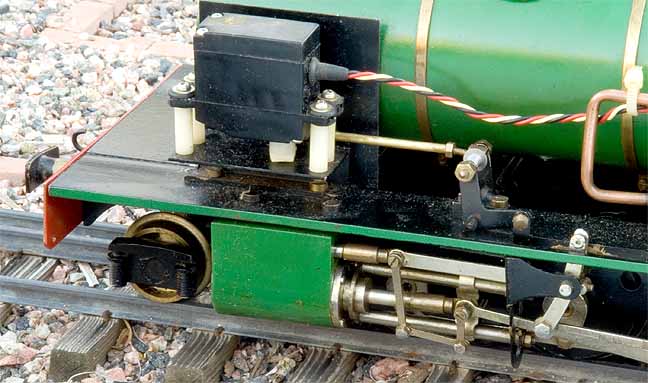
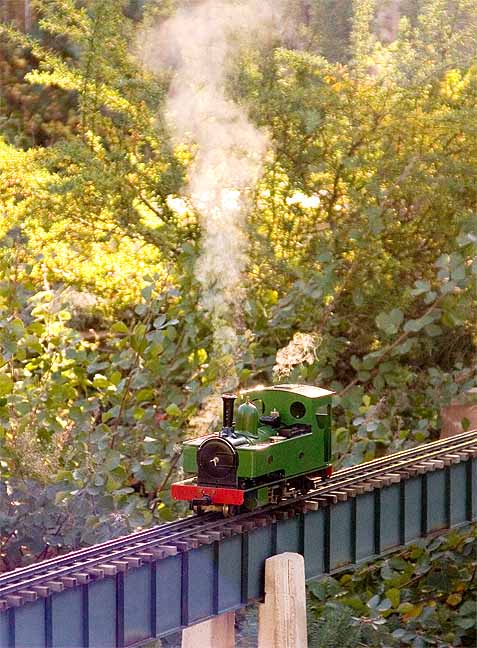

Back to Loco of the Month home page
Back to Sidestreet Bannerworks home page
This page and its contents
Copyright Sidestreet Bannerworks, 2008
.